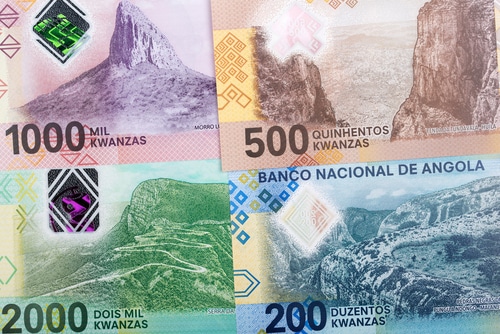The Angolan Kwanza (AOA) is Angola’s official currency and an essential part of the nation’s economy. Whether you’re traveling to Angola, sending money to loved ones, or simply looking to understand international currencies, learning about the Kwanza is crucial for navigating financial decisions confidently.
This guide will provide an overview of the Angolan Kwanza, its history, its current role, and practical tips to ensure clarity and ease when dealing with this currency.
What Is the Angolan Kwanza?
The Angolan Kwanza (AOA) has been Angola’s official currency since 1977, replacing the Angolan escudo after the country gained independence from Portugal in 1975. The Kwanza is named after the Kwanza River, one of Angola’s most important national symbols.
The currency is divided into 100 cêntimos (similar to cents) and is issued in various denominations. Banknotes include 200, 500, 1,000, 2,000, 5,000, and 10,000 Kwanza, while coins are available in smaller values like 50 cêntimos, 1 Kwanza, and higher.
Exchange Rate and Value Fluctuations
The value of the Angolan Kwanza has experienced significant fluctuations over the years, driven by local and international economic factors. The Angolan economy relies heavily on oil exports, which makes the value of the Kwanza sensitive to global oil price changes. Inflation, government policy, and foreign exchange reserves also contribute to the Kwanza’s exchange rate.
To stay updated, check reliable currency converters or financial news platforms to access the most accurate and current exchange rates.
The History and Evolution of the Kwanza
The Kwanza has gone through several changes since its introduction, reflecting Angola’s economic and political history.
- The Original Kwanza (1977-1990):
After Angola gained independence, the first Kwanza (known simply as “Kwanza”) replaced the Portuguese escudo. This version of the Kwanza faced inflation issues as the country grappled with post-independence struggles.
- The Novo Kwanza (1991-1999):
To address hyperinflation, Angola introduced the “Novo Kwanza” (NOK), or “New Kwanza.” This transition aimed to stabilize the economy and rebuild confidence in the currency.
- The Second Kwanza (1999-Present):
The Novo Kwanza was replaced by the current version simply called the “Kwanza.” Despite continued challenges, this currency remains in circulation and is the legal tender of Angola today.
Understanding these historical shifts helps provide context for the challenges and achievements of Angola’s financial system.
Where and How Is the Kwanza Used?
The Kwanza is primarily used within Angola for all economic transactions, from everyday purchases to large-scale business deals. If you’re traveling to Angola, you’ll use the Kwanza to pay for goods, services, and accommodations.
Guidelines for Using the Kwanza in Angola
- Cash Is King: While big cities like Luanda may accept credit and debit cards, smaller towns and local markets typically rely on cash transactions.
- Currency Exchange: If you’re exchanging money, aim to do so at authorized exchange bureaus or banks to ensure fair rates and avoid counterfeit currency.
- Keep Small Denominations Handy: Smaller denominations are particularly helpful for paying for daily purchases, such as food, transport, or small markets.
Practical Tips for Currency Exchange
If you need to acquire Angolan Kwanza or exchange it for another currency, use these tips to make the process smooth and safe.
- Exchange Rates Matter: Ensure you’re getting the latest rates by checking online tools or contacting your local bank. Rates can vary significantly between providers.
- Use Authorized Services: Avoid unregulated money changers. Instead, use banks, ATMs, or licensed exchange bureaus for your transactions.
- Plan Ahead: If you’re traveling to Angola, carry a small reserve of cash in case ATMs are unavailable.
How to Send Money to Angola with Confidence
If you’re sending money to family or friends in Angola, reliability, safety, and transparency should be your top priorities. Modern remittance platforms make it easier than ever to send money internationally without complications.
Benefits of Modern Money Transfer Platforms
- Transparent Fees: Know how much you’re sending and what fees apply upfront.
- Fast Delivery: Many platforms can deliver funds to Angola within minutes.
- Multiple Options: Choose between bank deposits, cash pickups, or mobile transfers.
By choosing a reputable service, you can send money while ensuring your loved ones in Angola can access their funds securely and quickly.
Fun Facts About the Angolan Kwanza
Currencies often carry cultural and historical significance, and the Kwanza is no exception.
- The Kwanza banknotes feature portraits of prominent Angolan leaders, highlighting the country’s proud heritage.
- Some coins and notes showcase designs inspired by Angolan art and culture.
- The Kwanza is also a valuable educational tool, teaching locals and visitors about Angola’s rich history and traditions.
Wrapping Up
Navigating financial matters in unfamiliar currencies can sometimes feel overwhelming, but gaining a solid understanding of the Angolan Kwanza will prepare you to make confident decisions. Whether you’re planning a trip to Angola, sending money to loved ones, or simply exploring cultural curiosities, the Kwanza is an integral part of Angola’s story.
Start exploring international currencies with tools and platforms that guarantee safety, transparency, and ease. Choose services that you can trust to ensure reliable and hassle-free financial transactions.
